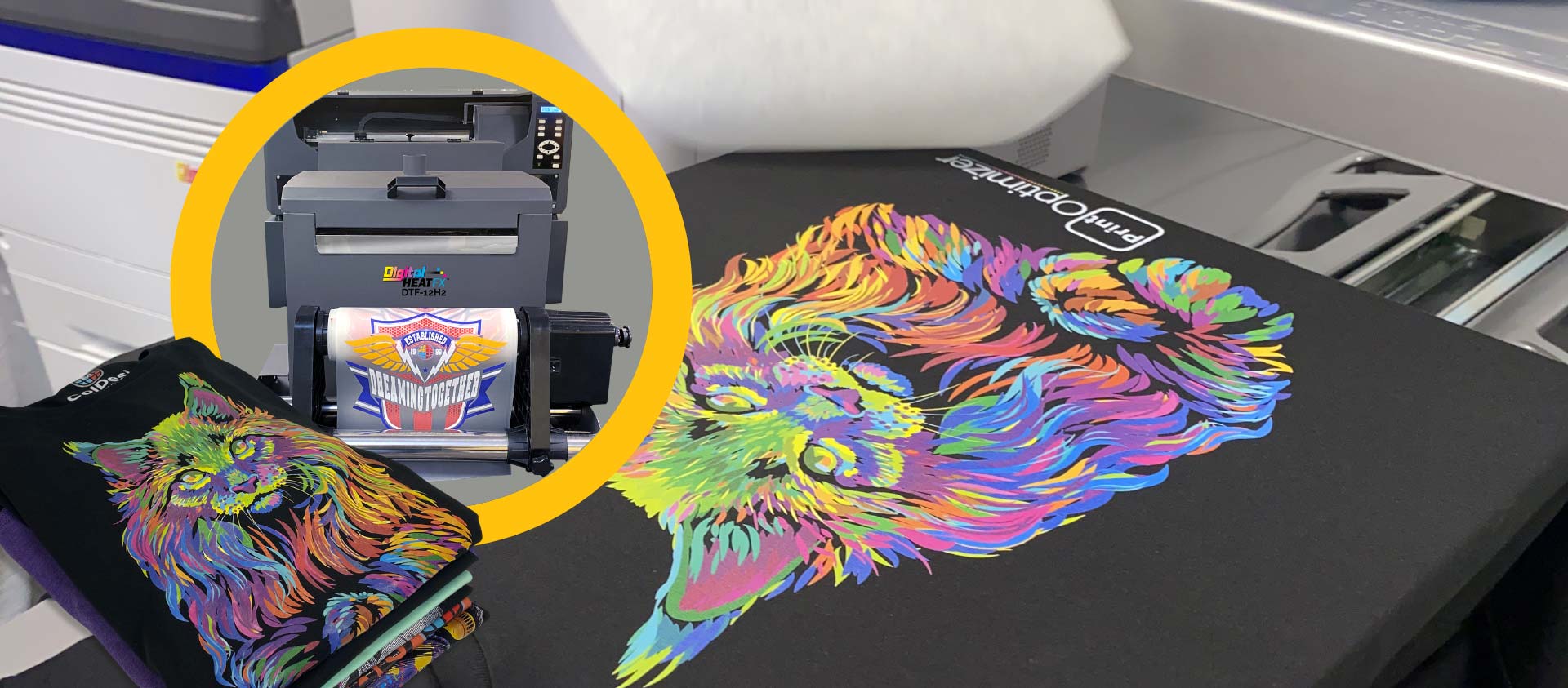Innovative DTF Printing Solutions: Enhance Your Apparel with Direct-to-Film Innovation
Innovative DTF Printing Solutions: Enhance Your Apparel with Direct-to-Film Innovation
Blog Article
Ultimate Guide to DTF Printing Techniques for Sensational Textile Styles
Embarking on the journey of grasping DTF printing methods can open up a world of possibilities for creating visually fascinating textile styles. In this overview, we will certainly explore the complex details of DTF printing, from realizing the basic basics to unraveling advanced shade strategies that can elevate your designs to brand-new heights.
Recognizing DTF Printing Basics
DTF printing, a procedure that involves moving styles from a special movie to textiles making use of heat and pressure, creates the structure of fabric printing techniques. This cutting-edge method enables top quality, dynamic layouts to be effortlessly moved onto different materials with accuracy and detail. The very first step in DTF printing involves producing or selecting a style that will certainly be published onto the textile. This layout is after that published onto an unique film utilizing a DTF printer, which utilizes particular dyes or pigments to guarantee shade precision and toughness.
The final result is a stunning, long-lasting fabric style that is washable, adaptable, and immune to fading. Overall, understanding the fundamentals of DTF printing is crucial for mastering this modern textile printing technique.
Selecting the Right Textile Materials
Having developed the fundamental principles of DTF printing strategies for textile layouts, the next crucial factor to consider exists in picking the ideal fabric materials to match this innovative process effectively. The success of a DTF print mostly relies on the compatibility between the selected fabric and the printing technique. When selecting textile materials for DTF printing, it is vital to take into consideration the textile's composition, weave, and structure. Fabrics that function well with DTF printing include polyester blends, spandex, nylon, and various other artificial materials. These fabrics typically have a smooth surface area that enables for dynamic and comprehensive prints. Furthermore, the stretchability of these materials can accommodate the warmth transfer procedure associated with DTF printing without misshaping the layout. It is suggested to prevent natural fibers such as cotton or silk, as they might not yield the same level of print quality and toughness. By picking the ideal textile materials, designers can make the most of the potential of DTF printing to produce lasting and spectacular textile designs.

Mastering the Printing Refine
To succeed in DTF printing techniques for textile designs, grasping the printing procedure is crucial for accomplishing regular and top notch outcomes. The temperature, stress, and duration of heat application have to be meticulously controlled to make sure proper attachment of the style to the fabric. By developing each of these actions in the printing procedure, developers can consistently generate resilient and stunning fabric layouts with DTF printing techniques.
Enhancing Layouts With Shade Methods

In addition, trying out with shade gradients can bring a feeling of motion and fluidness to the design. By mixing colors seamlessly, a gradient impact can be achieved, adding a contemporary and vibrant touch to the textile design. In addition, using color obstructing strategies can create vibrant and striking visuals by juxtaposing various solid shades in distinct areas of the design.
Moreover, including metallic or neon colors can supply a special and appealing element to the textile design, making it stick out and emanate a feeling of vibrancy. When purposefully used, these color methods can raise the overall aesthetic charm of fabric styles, making them more remarkable and captivating.
Troubleshooting Common DTF Printing Issues
After checking out different shade strategies to improve fabric designs, it is essential to great site attend to typical DTF printing issues that may occur during the manufacturing procedure. Furthermore, concerns with picture clarity and intensity can happen due to low-resolution photos or improper printing strategies. By being aware of these common troubles and applying the required troubleshooting read more actions, you can improve the total top quality of your DTF published fabric styles.
Final Thought
In final thought, grasping DTF printing strategies is crucial for developing sensational fabric designs. With practice and interest to detail, one can produce one-of-a-kind and beautiful fabric layouts making use of DTF printing techniques.
Layouts))))
DTF printing, a process that includes moving designs from a special film to textiles making use of heat and stress, creates the foundation of textile printing strategies.Having actually developed the click here for info fundamental concepts of DTF printing methods for textile styles, the next critical factor to consider lies in choosing the suitable fabric products to enhance this cutting-edge process successfully. By selecting the best textile products, developers can take full advantage of the capacity of DTF printing to create resilient and stunning fabric styles.
To stand out in DTF printing techniques for fabric designs, understanding the printing process is essential for achieving consistent and high-grade results. DTF Printing. By sharpening each of these steps in the printing procedure, developers can consistently create resilient and magnificent fabric designs with DTF printing strategies
Report this page